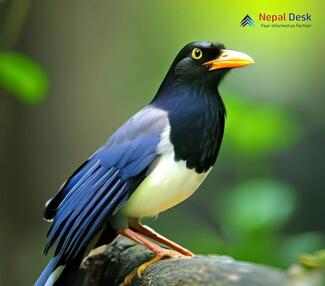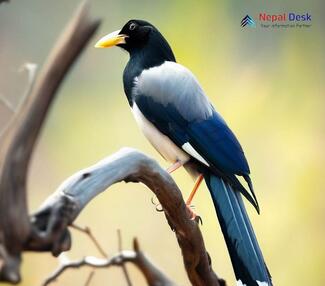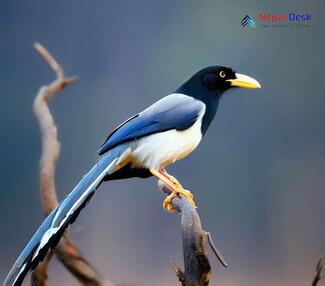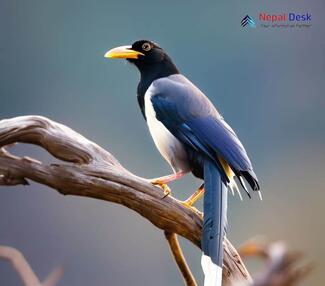The Yellow-billed Blue Magpie, a magnificent bird species found primarily in Nepal, is an absolute treat for bird enthusiasts and nature lovers alike. With its striking hue and captivating behavior, this fascinating creature never ceases to amaze those who come across it. In this article, we delve into the taxonomy and physical features of the Yellow-billed Blue Magpie, explore their habitat and diet, discuss their breeding and nesting habits, and celebrate their presence in Nepal.
Taxonomy and Physical Features
Belonging to the crow family (Corvidae), the Yellow-billed Blue Magpie (Urocissa flavirostris) is a close relative of the Common Green Magpie. The brilliant blue plumage of this species contrasts beautifully with its striking yellow beak and orbital skin. With a body length of around 65-68 cm and a remarkable tail that reaches up to 40 cm, they are undeniably eye-catching creatures.
Habitat and Diet
Yellow-billed Blue Magpies prefer montane forests at elevations between 1,500 to 3,600 meters above sea level. They are predominantly found across Nepal, Tibet, Himachal Pradesh, Uttarakhand, India's northern states, as well as Bhutan.
These birds are omnivorous in nature. Their diet mainly consists of insects such as beetles and caterpillars along with fruits like mulberries and figs. Occasionally they've also been known to feed on small reptiles, mammals or even raid other birds' nests for eggs or fledglings.
Breeding and Nesting
Yellow-billed Blue Magpies typically breed from April to June, with the nesting process beginning in early March. Their nests are skillfully built up within trees using twigs and branches intertwined with roots; the inside portion is padded with softer materials such as moss and animal hair.
The female magpie lays between 3 to 5 eggs that are pale bluish-green, and speckled with darker spots. After an incubation period of about 18-22 days, the young birds fledge within a month, under the diligent care of both parents.
Presence in Nepal
Nepal provides an ideal environment for the Yellow-billed Blue Magpie, with plenty of deciduous and mixed forests offering ample habitat and food sources. The Annapurna Conservation Area, especially, hosts a sizable population and has become a popular bird-watching location for enthusiasts hoping to catch a glimpse of this remarkable bird. In addition, sightings have also been reported in Langtang National Park and along various trekking routes in the country.
In conclusion, the Yellow-billed Blue Magpie is an extraordinary bird species waiting to captivate birdwatchers and nature enthusiasts with its alluring plumage and intriguing behavior. With ample opportunities in Nepal to witness these birds in their natural habitat, one can't help but feel a sense of awe at their grace and beauty. So, next time you find yourself exploring the mountains of Nepal, keep an eye out for this enchanting species – the Yellow-billed Blue Magpie will undoubtedly leave you spellbound.




